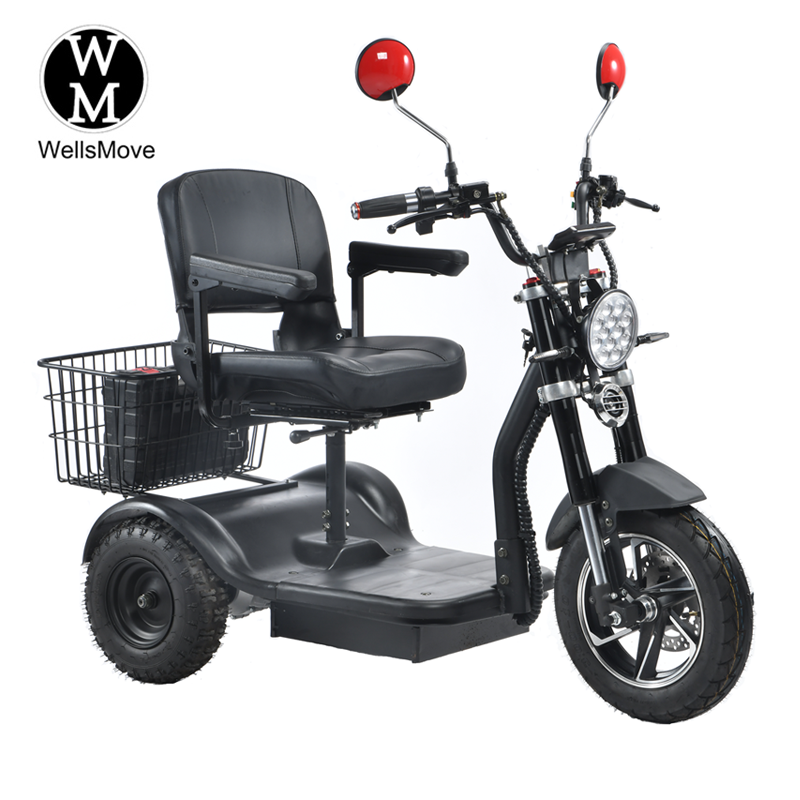Reliability test of key components of elderly three-wheeled scooters: ensuring safety and durability
Introduction
With the increasing trend of global population aging, elderly three-wheeled scooters, as a convenient means of travel, have been favored by more and more elderly people. However, the safety and reliability of scooters are key factors in whether they can gain a foothold in the market. For international wholesale buyers, understanding the reliability test methods and standards of key components of elderly three-wheeled scooters will not only help to screen out high-quality products, but also provide end users with safer and more reliable travel guarantees. This article will explore in depth the reliability test of key components of elderly three-wheeled scooters, including frames, braking systems, electrical systems, tires, etc., and combine international standards and actual test cases to provide buyers with a comprehensive reference.
1. Frame strength test
The frame is one of the core components of elderly three-wheeled scooters, and its strength is directly related to the overall stability and safety of the vehicle. According to relevant standards, the frame needs to undergo the following types of strength tests:
1. Static strength test
The static strength test mainly tests the load-bearing capacity of the frame under static load. During the test, the scooter is placed on a horizontal ground, simulating the maximum load state, applying the corresponding load, and observing whether the frame is deformed, cracked or otherwise damaged. Generally speaking, the static strength of the frame should meet the requirements of the national standard GB/T 12996-2012.
2. Impact strength test
The impact strength test is used to evaluate the impact resistance of the frame when it is subjected to sudden impact. The test method includes placing the frame in a specific test device, applying an impact force of a certain energy, and observing whether the frame can withstand it without being damaged. For example, the frame needs to be able to withstand the impact of a heavy object dropped from a certain height.
3. Fatigue strength test
The fatigue strength test simulates the repeated stress of the frame during long-term use. By applying a periodic load to the frame, after multiple cycles, check whether the frame has fatigue cracks or fractures. Fatigue strength testing usually needs to be performed on a special fatigue testing machine.
2. Braking system test
The braking system is a key component of the safety of the elderly three-wheeled scooter, and its performance is directly related to the life safety of the user. The test of the braking system mainly includes the following aspects:
1. Braking performance test
The braking performance test is to test the braking distance of the scooter at different speeds. During the test, the scooter is driven at a certain speed, and the maximum braking force is suddenly applied to measure the distance from the start of braking to the complete stop of the vehicle. According to the standard, the braking distance should meet the requirements of GB/T 12996-2012.
2. Braking response time test
The braking response time refers to the time interval from the application of braking force to the start of vehicle deceleration. This indicator is crucial for safety in emergency braking. The test method is to measure the time from the start of the brake to the actual deceleration of the vehicle through a sensor.
3. Parking brake fatigue strength test
The fatigue strength test of the parking brake is to test its reliability in long-term use. During the test, the parking brake needs to be repeatedly operated under a certain load for many times to check whether it will have problems such as loosening and failure.
3. Electrical system test
The electrical system is an important part of the elderly three-wheeled scooter, and its reliability is directly related to the operating safety and performance of the vehicle. The test of the electrical system mainly includes the following aspects:
1. Battery capacity and endurance test
Battery capacity and endurance are key indicators of the electrical system of the scooter. During the test, it is necessary to measure the battery’s endurance under standard conditions (such as flat roads, no wind, etc.). According to the standard, the endurance of the scooter should be no less than 40km.
2. Charging time detection
The length of the charging time directly affects the user’s experience. During the test, record the time required for the battery to be fully discharged from full charge. Generally speaking, the charging time should be controlled within a reasonable range.
3. Electrical safety test
Electrical safety test is an important part to ensure that the scooter will not have electrical failures or safety accidents during use. The test content includes insulation resistance test, short circuit protection test, overload protection test, etc. According to the standard, the insulation resistance between the live part and the non-live part should be no less than 2MΩ.
4. Tire performance test
The tire is the only part of the scooter that contacts the ground, and its performance directly affects the driving stability and safety of the vehicle. The tire test mainly includes the following aspects:
1. Tire wear resistance test
The wear resistance test is to test the durability of the tire in long-term use. During the test, the tire is installed on a specific test equipment to simulate the actual driving conditions. After a certain mileage, the degree of wear of the tire is measured.
2. Tire tread depth detection
The tire tread depth directly affects the tire’s grip and drainage performance. During the test, a special tread depth measurement tool is used to measure the depth of the tire tread to ensure that it meets safety standards.
3. Obstacle crossing ability test
The obstacle crossing ability test is to test the performance of the tire when passing through obstacles. During the test, the scooter travels at a certain speed and passes through a certain height of steps or ditches to observe whether the tire can pass smoothly.
Post time: Jul-16-2025



